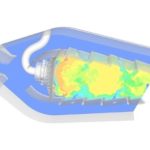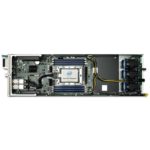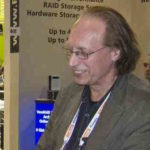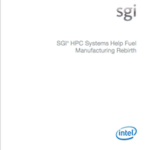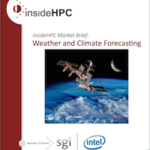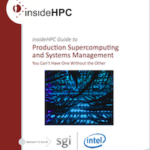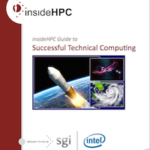Over at the ANSYS Blog, Tony DeVarco writes that the company worked with SGI to break a world record for HPC scalability. “Breaking last year’s 129,024 core record by more than 16,000 cores, SGI was able to run the ANSYS provided 830 million cell gas combustor model from 1,296 to 145,152 CPU cores.This reduces the total solver wall clock time to run a single simulation from 20 minutes for 1,296 cores to a mere 13 seconds using 145,152 cores and achieving an overall scaling efficiency of 83%.”
Intel Xeon Phi Boosts Supercomputing at NCI in Australia
The National Computational Infrastructure in Canberra, Australia’s national advanced computing facility, is the first Australian institution to deploy the latest generation of Intel Xeon Phi processors, formerly code named Knights Landing. “NCI is leading efforts in the scientific community to tune applications for Intel Xeon Phi processors,” explains Dr Muhammad Atif, NCI’s HPC Systems and Cloud Services Manager. “We have identified a large number of applications that will benefit from this hardware and software paradigm, including those applications in the domains of computational physics, computational chemistry and climate research.”
Bright Computing Announces Reseller Agreement with SGI
“SGI and Bright Computing have been working together for the last year to provide our joint customers with enterprise level clustered infrastructure management software for production supercomputing,” said Gabriel Broner, vice president and general manager of HPC, SGI. “By partnering with Bright Computing, our customers are able to select the cluster management tool that best suits their needs.”
Video: IDC HPC Market Update
Earl Joseph presented this talk at the HPC User Forum in Austin. “HPC is still expected to be a strong growth market going forward. IDC is forecasting a 7.7 percent growth from 2015 to 2019. We’re projecting the 2019 HPC Market will exceed $15 Billion.”
Interview: Numascale to Partner with OEMs on Big Memory Server Technology
Hailing from Norway, big-memory appliance maker Numascale has been a fixture at the ISC conference since the company’s formation in 2008. At ISC 2016, Numascale was noticeably absent from the show and the word on the street was that the company was retooling their NumaConnect™ technology around NVMe. To learn more, we caught up with Einar Rustad, Numascale’s CTO.
Manufacturing Rebirth for HPC Systems
Manufacturing growth is being fueled by the adoption of computer aided engineering (CAE) and analysis solutions powered by high performance computing (HPC)—especially by the Tier One manufacturers. HPC is beginning to make some inroads into the ranks of the small to medium sized manufacturers (SMMs), but the going is slow.
Weather and Climate Forecasting
In the pantheon of HPC grand challenges, weather forecasting and long-term climate simulation rank right up there with the most complex and com- putationally demanding problems in astrophysics, aeronautics, fusion power, exotic materials,and earthquake prediction, to name just a few. Modern weather prediction requires cooperation in the collection of observed data and sharing of forecasts output among all nations, a collabora- tion that has been ongoing for decades. This data is used to simulate effects on a range of scales— from events, such as the path of tornados, that change from minute to minute and move over distances measured in meters, to turnover of water layers in the ocean, a process that is measured in decades or even hundreds of years, and spans thousands of miles.
Supercomputers Production and System Management
With High Performance Computing (HPC) supercomputer systems that comprise tens, hundreds, or even thousands of computing cores, users are able to increase application performance and accelerate their workflows to realize dramatic productivity improvements. The performance potential often comes at the cost of complexity. By their very nature, supercomputers comprise a great number of components, both hardware and software, that must be installed, configured, tuned, and monitored to maintain maximum efficiency. In a recent report, IDC lists downtime and latency as two of the most important problems faced by data center managers.
Successful Technical High Performance Computing
This paper offers those considering HPC, both users and managers, guidance when considering the best way to deploy an HPC solution. Three important questions are suggested that help determine the most appropriate HPC design (scale-up or scale out) that meets your goal and accelerates your discoveries.

